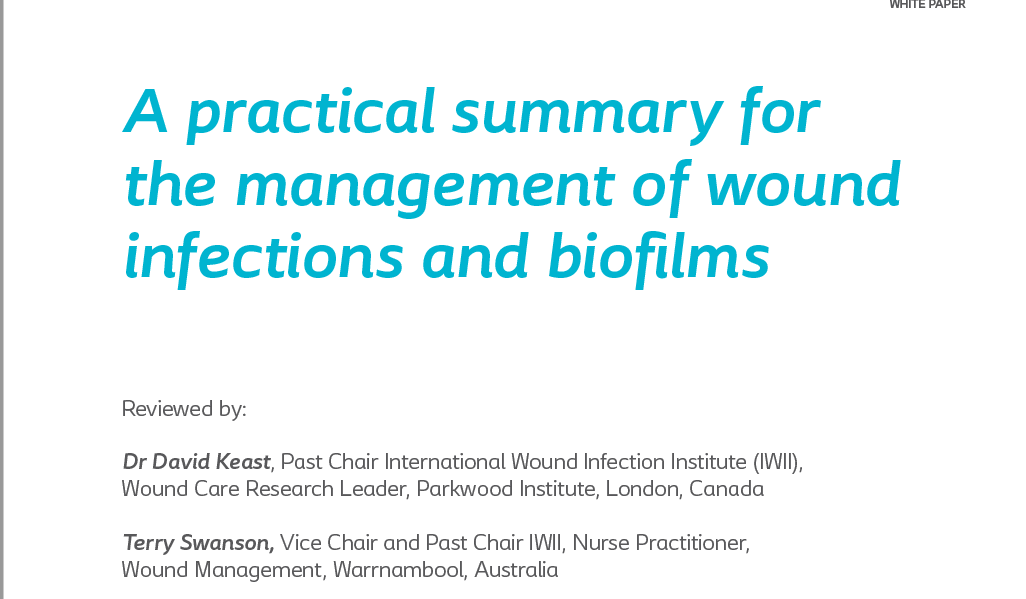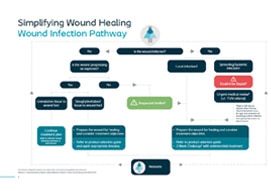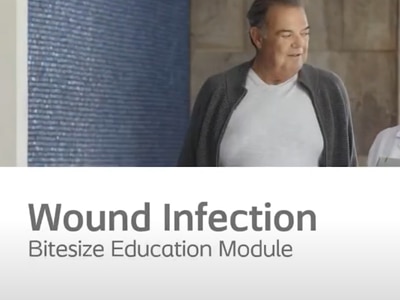Get full access with a free account
Benefits of the Coloplast® Professional Educational platform
![]() Full access to educational content, events and resources
Full access to educational content, events and resources
![]() Track your progress
Track your progress
![]() Share content with your colleagues
Share content with your colleagues
![]() Share supporting material with your patient
Share supporting material with your patient
How to prevent and manage biofilm
Preventing and managing biofilm is an important part of wound management. This is the case for two reasons:2
- biofilm are present in most chronic wounds; and
- the presence of biofilm is a leading cause of delayed wound healing.
One of the most important ways to avoid biofilm from forming is to reduce exudate pooling.2
How to manage biofilm
Once you’ve established that biofilm are likely present in the wound, you need to lay out an appropriate treatment strategy. For your treatment strategy to have the maximum effect, there are two basic steps you can take:2
- do what you can to strengthen your patient’s immune system; and
- always work in a clean environment.
The best strategy for biofilm-based wound care is the ‘clean and cover’ approach. This approach relies on:2
- adequate debridement to disrupt biofilm; and
- the use of antimicrobial dressings between debridement. This reduces the planktonic bacteria’s ability to re-establish biofilm.
| Wound cleansing | Mechanical debridement |
|---|---|
|
Why: To remove non-viable tissue, debris, foreign matter and excess exudate When: Each dressing change How: Irrigation with a force of 4-15 psi has been demonstrated as effective and safe4 |
Why: To remove and disrupt biofilms and make them more susceptible to antimicrobials1 When: Each dressing change (sharp debridement as required) How: Physical disruption with gauze or pad by gentle circular motion in the wound bed |
| Manage the gap | Use topical antimicrobials | Re-assess regularly |
|---|---|---|
|
Why: Gaps may lead to exudate pooling, bacterial growth, and development of biofilms5 When: Each dressing change How: Dressings that conform to the wound bed or wound fillers with a secondary dressing |
Why: Antimicrobials such as silver have been shown to kill biofilms in vitro1 When: Directly after disruption by mechanical debridement How: In particular, both silver and cadexomer iodine have been shown to kill biofilms |
Why: To ensure wound progression and enable change oftreatment if the wound is not gealing When: At every dressing change or at least once per week How: Re-assess the questions presented above |
Continuous re-assessment necessary
To prevent wound infection or biofilm re-formation, you need to continuously reassess the wound at every dressing change.
Remember always to refer the patient to a specialist if you observe:1
- a less than 20% improvement in the wound area over a period of four weeks;
- increased pain levels;
- unexpected increase in exudate;
- suspected infection or biofilm;
- a decline in the patient’s health and wellbeing

Wound Infections & biofilms
Read the practical summary for the management of wound infections and biofilms

Wound Infection Pathway
Using the Coloplast 3 Step Approach, we've broken down the pathway for Assessing, Preparing and then treating wound infection into a simplified pathway.

Bite sized learning
Covering:
- The Wound Infection continuum
- Biofilms and their effect on wound healing
- Bacteria causing infection
- Infection diagnosis
- How to manage the infected wound
